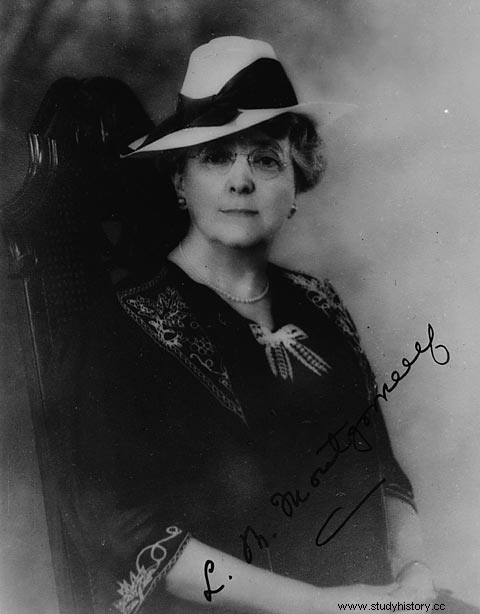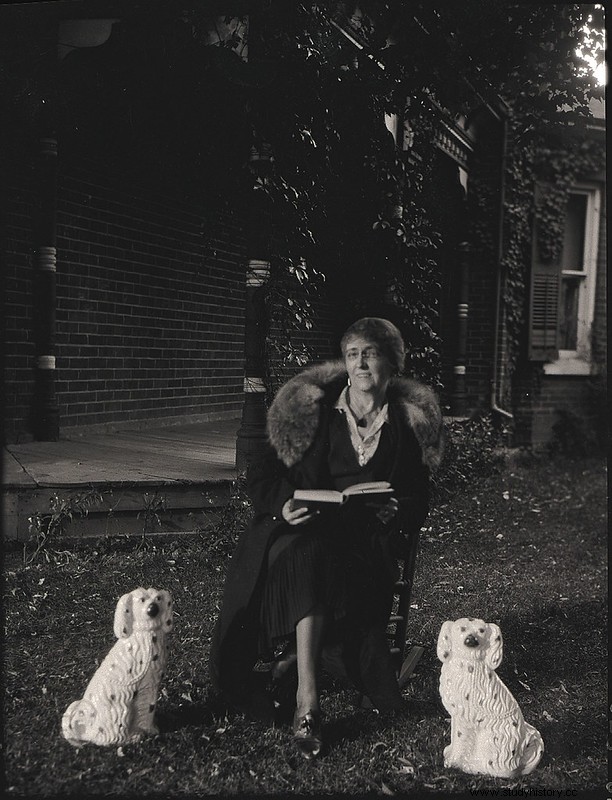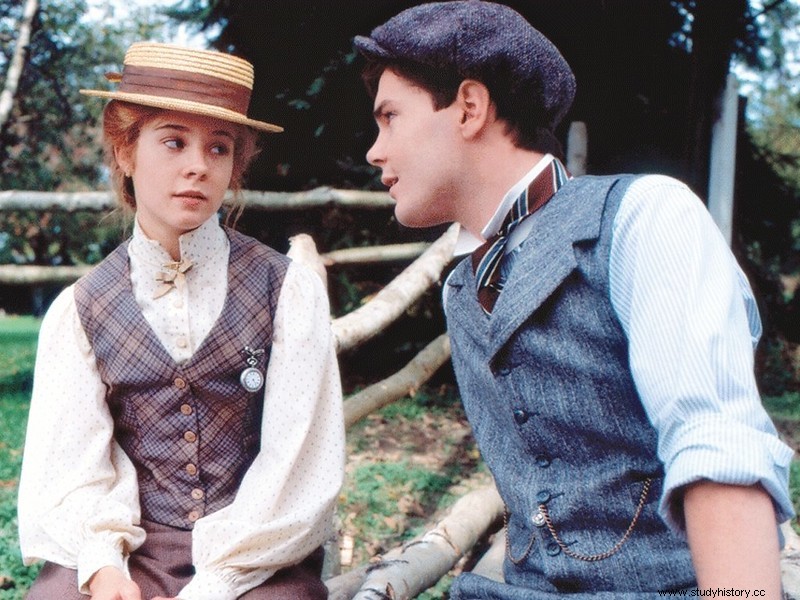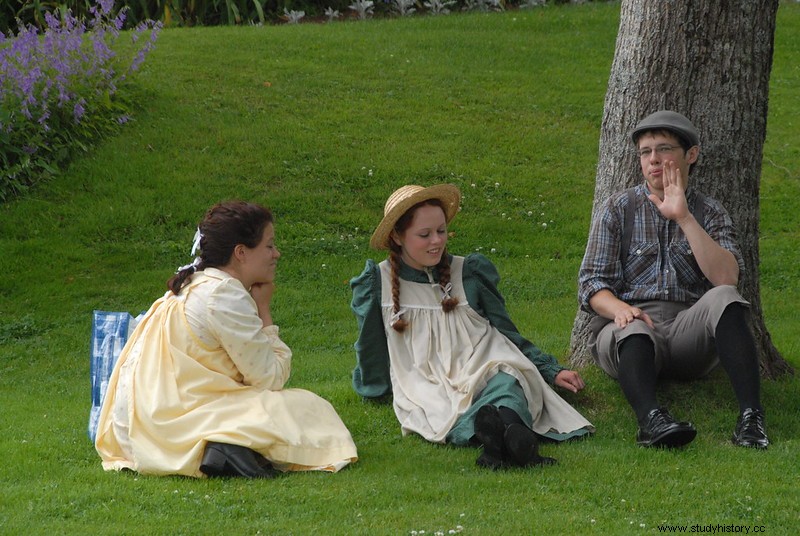Few things represent classic Canadian better than the freckled face of the titular Anne of LM Montgomery's Anne of Green Gables. The novel is one of the most internationally recognizable pop culture exports, having sold over 50 million copies worldwide. Despite the fact that the first publication is now over 100 years ago, the novel still sees printing in several languages.
And in the century since Anne of Green Gables published, the novel's popularity has not yet waned. Anne Shirley has appeared in one way or another for almost every decade. Prince Edward Island sees a steady stream of tourists each year who come to explore the novel's iconic surroundings.
But how many adaptations has the children's novel seen? How many books did Montgomery write about his red-haired heroine? Did she write anything else? And what was life like for the author himself?
All interesting questions that many may not know the answer to. For curious fans who potentially want to get answers to some of their questions, this blog post is a perfect place to start. This timeline serves as an overview of Montgomery's life, the various iterations of Anne, and other interesting trivia related to the legacy of one of Canada's most famous modern stories.
1874 - 1905

Lucy Maud Montgomery was born on November 30, 1874 in Clifton, Prince Edward Island. Montgomery wrote in her autobiography that her earliest memory was when she was two years old and saw her mother in the coffin. After her mother's death, her grandparents grew up in Cavendish, PEI. Her father first lived nearby, but later moved to Prince Albert, Northwest Territories. Montgomery joined him briefly in 1890, but she felt marginalized by her father's new family and life. She quickly returned home to her grandparents, even though she could not completely escape the feeling of loneliness.
Montgomery first began writing at nine o'clock, when she diligently wrote in a diary and experimented with composing poetry. When she was a teenager, however, she turned her attention to short stories with considerable success. She published her work in magazines under a series of pseudonyms before settling on LMMontgomery as her pen name.
During the 1890s, Montgomery began to take an education. She completed a two-year teaching course in Charlottetown. After that, Montgomery began an English literature program, but had to drop out for financial reasons. She also engaged in a few romantic relationships during her studies and the subsequent teaching career, but none lasted long.
She taught at PEI schools for a few years, but returned to Cavendish after her grandfather's death in 1898. Montgomery would remain in the city for most of the following decade to help care for her grandmother.
During this period, Montgomery spent most of his time writing or helping with the post office that ran out of his grandparents' house. She earned a decent living from authorship at the time and continued to submit her work for publication. In 1905, Montgomery completed what was to become her most famous work.
Anne from Bjørkely
Anne of Green Gables is an adult story that plays the orphan Anne who is mistakenly sent to a couple of middle-aged siblings. The story follows her adventures (and misfortunes) while her imagination, warmth and charm slowly win over the new society she has found herself in.
Classic children's stories inspired the novel together with a newspaper story Montgomery read about a real couple who wanted to adopt a boy, but instead got a girl. It also drew influence from Montgomery's own life and experiences.
Montgomery sent out the manuscript to dozens of publishers, only to face rejection each time. Finally, she gave up and stuffed the novel into a hat box where she forgot it.
1906 - 1915

In 1906, Montgomery was secretly engaged to Ewen MacDonald, a Presbyterian minister. However, they did not marry until a few years later.
The following year, Montgomery rediscovered the hat box with the Anne of Green Gables manuscript inside. She decided to give the novel a try again and sent the manuscript to several publishers. This time, however, she was successful. Montgomery secured an agreement with LCPage, a US publisher based in Boston. Anne of Green Gables was released in 1908 with immediate success. It sold over 19,000 XNUMX copies in its first year.
The novel was praised by established literary figures such as Mark Twain, who referred to Anne as:
"the dearest, most touching and glorious child since the immortal Alice."
- Mark Twain
Her contract with LCPage required Montgomery to write two sequels to her original book. The first sequel was released in 1909 and was titled Anne of Avonlea. After publishing some books outside the Anne series, the third book, Anne of the Island, followed in 1915.
Montgomery's grandmother died in March 1911. A few months later, Mongtomery finally married Ewan Macdonald. The couple were on a honeymoon in England and Scotland before returning to Canada. Macdonald received a parish debt in Leeksdale, Ontario, so the couple moved provinces the same year.
Montgomery was to give birth to three sons. Her first son, Chester, was born in 1912. After giving birth to a stillborn child, she had her last son, Stuart, in 1915. In addition to caring for the home and caring for the children, Montgomery continued to write.
1916 - 1933

In the latter half of the 1910s, Montgomery published several works. Montgomery's only book of poems published while she was alive was published in 1916. In 1917 she published both the fourth Anne novel, Anne's House of Dreams, and an autobiography entitled The Alpine Path:The Story of My Career.
In 1919, another book by Montgomery was published, Rainbow Valley, and the premiere of the first film adaptation of Anne of Green Gables. Montgomery despised the silent film and criticized it for an inaccurate portrayal of Anne's character. She also received minimal royalties from the film, and most of the money went to her publisher.
LCPage published a collection of Montgomery's short stories in 1920, although the author had not renewed his contract with them. Furious at the fact that the stories LCPage published without her authorization, Montgomery started the first of many legal battles with its former publisher. Other disputes between her and LCPage included rights to her first six books and the royalties she received from them.
The 1920s, however, were not all difficulties for Montgomery. In 1923, she was the first Canadian woman to become a Fellow of the Royal Society of Arts in the United Kingdom. She was also named one of the "Twelve Greatest Women in Canada" by the Toronto Star in 1924. Another notable moment for Montgomery this decade was in 1927 when she received fanmail from Stanley Baldwin, the current Prime Minister of the United Kingdom.
She continued to publish new works regularly. From 1923 to 1927, she published her best-selling Emily trilogy and one of her more adult novels, The Blue Castle. The latter was banned in some libraries from exploring taboo subjects, such as the fact that a woman was pregnant out of wedlock.
1934 - 1943

Anne of Green Gables got its second film adaptation in 1934, and this release marks the first time the story was shown with sound. The actress who played the main character liked the role so much that she changed the stage name to Anne Shirley for the rest of her career. Montgomery apparently liked the film more than the first, although she still had her problems. The film would be commercially successful enough to create a sequel, Anne of Windy Poplars, in 1940.
1934 was also the year Montgomery's husband was committed to a sanatorium. Macdonald's mental health had become quite unstable, and he had to withdraw from the priesthood the following year. The couple also moved to a new home in the Toronto area, which would be the last house Montgomery would live in.
Montgomery's mental health had also historically not been very healthy. She struggled to balance her roles as a wife and mother. She also struggled with the almost constant feeling of loneliness - a theme that would appear again and again in her written works.
In the 1930s, the last of Montgomery's novels was published. Another adult novel, The Tangled Web, was published in 1931. Montgomery accompanied the duology of Pat of Silver Bush and Mistress Pat, published in 1933 and 1935 respectively. Anne of Windy Poplars followed in 1936, chronologically the fourth book in the Anne series to despite the fact that it was the 4th released. After Jane of Lantern Hill from 7, the last book Montgomery himself wanted was to publish the last entry in the Anne series with Anne of Ingleside in 1937.
Montgomery died in 1942 at the age of 67. The cause of death was reported as heart failure. Her family had her body sent from Toronto to Cavendish, PEI, where Montgomery was to be laid to rest. Her husband would be buried there the following year.
1944 - 1980

Anne from Green Gables did not die with the creator. The legacy of the novel and its author seemed to continue to grow over time.
In 1952, Anne of Green Gables was translated into Japanese for the first time and released as Akage no An, which is translated into red-haired Anne. It was almost a success overnight, as it struck a chord with young Japanese post-war audiences.
Montgomery's debut novel continued to find its way to the next generation of audiences through its adaptation to new media. Anne of Green Gables:The Musical was released in 1965 and has since been performed in Charlottetown every summer. It holds the Guinness World Record for the longest annual musical, having won the title in 2014.
Just a few years after the musical, The Anne of Green Gables Museum opened its doors in 1972. Located 15 minutes west of Cavendish in PEI, the original building was home to Montgomery's aunt and uncle. Montgomery visited the property frequently in his youth and eventually wanted to get married there. The museum has artifacts from both Montgomery's actual life and the stories she wrote.
The story of Anne makes its way into a new medium once again in 1979; this time as an anime airing in Japan. The show used the same name as the translated novel, Akage No An, and ran in 50 episodes.
1981 - 2010

Kevin Sullivan's 1985 version of Anne of Green Gables is one of the most recognizable adaptations of the beloved children's novel. The film received several awards and gave three sequels:Anne of Green Gables:The Sequel (1987), The Continuing Story (2000) and A New Beginning (2008).
Sullivan returned to Montgomery's mythos in another form in the 90's with the Road to Avonlea series. The TV show took elements from some of Montgomery's books that were not part of the Anne series due to the plot lines. The Disney Channel recorded the show in 1990, and it lasted for seven seasons before ending in 1996.
Although there has been a lot of love for the fictional character of Anne Shirley so far, there was still a lot of admiration for Montgomery herself. In 1993, the University of Prince Edward Island founded the LM Montgomery Institute (LMMI). The institute describes itself as a "research center focused on [Montgomery's] life and work." Fans, scholars and some of Montgomery's family - including both her daughter-in-law and her granddaughter - attended the institute's opening. LMMI holds bi-annual conferences dedicated to the author and her writing, in addition to running a digital journal that publishes scientific articles and essays.
Both Montgomery's birthplace and her longtime home in Leeksdale were designated National Heritage Sites in Canada at the turn of the millennium, in 1997 and 2004, respectively. They are available for the public to visit and explore.
100th Anniversary of the Publication of Anne of Green Gables
2008 marked 100 years of Anne of Green Gables, and there were many tributes to mark the occasion, such as Kevin Sullivan's latest Anne film, Anne of Green Gables:New Beginning.
But in the midst of the celebration, there was also a revelation about Montgomery's death that sparked debate. In a Globe and Mail article, Montgomery's granddaughter revealed the existence of a note her father had found on the author's bedside table. The family had long thought it was a suicide note and that she took her own life, but kept the knowledge hidden. Kate Macdonald Butler, Montgomery's granddaughter, chose to stand out as a way to help combat the stigma of mental illness.
A famous Montgomery researcher gave a different opinion. Dr. Mary Rubio, who wrote the biography Lucy Maud Montgomery:The Gift of Wings, explained her views on the situation in an email interview with Globe and Mail. She objected that the note was marked "176", which may mean that it was probably something Montgomery had intended to later write for her "official" magazines, a common habit for the author. Dr. Rubio theorizes that the author's eldest son destroyed the other 175 entries. He lived at home at the time, and the entries would not have painted a friendly picture of him, as his mother did not like him highly after the divorce and lack of work.
However, Dr. Rubio did not completely reject the suicide theory. She applauded the family's choice to speak out and admitted that at that stage in her life, Montgomery "suffered unbearable mental pain."
2011 to today

A new decade led to a new amount of adaptations of the beloved children's book. The children's channel YTV broadcast a trilogy of Anne films live on TV which was broadcast in 2016 and 2017.
Also in 2017, Netflix's Anne came up with an E, which got a cult following. This well-received series aired for three seasons before being canceled and won several Canadian Screen Awards.
Anne with E marks the last well-known adaptation, but it will certainly not be the last. The series falls under the public domain now, which means that everyone can create their own version of the classic story. So even if there are no known Anne projects on the horizon at this time in 2021, one can be sure that Green Gables will return in the future.
Imagine someone telling Lucy Maud Montgomery when she originally wrote the Anne of Green Gables script that her novel would still be in print for over a century. In that scenario, there is a good chance that she would not have believed them in the slightest. After all, she had met rejection after rejection from every publisher she sent the novel to.
And yet, in the year 2021, Anne of Green Gables has sold millions of copies worldwide and created dozens of customizations. Random readers and academics highly value Montgomery's work. The institute, which bears Montgomery's name and studies her authorship, will soon enter its 20th year. Feminists such as Margaret Atwood have championed Anne's character as an example of early feminism in literature.
Lucy Maud Montgomery may have passed away almost 80 years ago now, but her writing talent and the charming red-haired girl she created have fostered a monumental legacy that no one can deny.
Resources and further reading
Adams, James. "Lucy Maud suffered 'unbearable psychological pain'." The Globe and Mail, The Globe and Mail, September 24, 2008, www.theglobeandmail.com/news/national/lucy-maud-suffered-unbearable-psychological-pain/article17971634/.
"Anne of Green Gables." The Canadian Encyclopedia, March 26, 2009, www.thecanadianencyclopedia.ca/en/article/anne-of-green-gables.
Herman, Natasha. "The Story of Anne of Green Gables." Anne of Green Gables:Official site of the original series, www.anneofgreengables.com/blog/how-anne-of-green-gables-has-affected-us-through-the-years.
"LM Montgomery Institute." About LM Montgomery | LM Montgomery Institute, LM Montgomery Institute, lmmontgomery.ca/about/lmm/her-life.
"Lucy Maud Montgomery." The Canadian Encyclopedia, January 1, 2013, www.thecanadianencyclopedia.ca/en/article/montgomery-lucy-maud.
"Our story." Anne of Green Gables Museum, Anne of Green Gables Museum, annemuseum.com/our-history.php.
